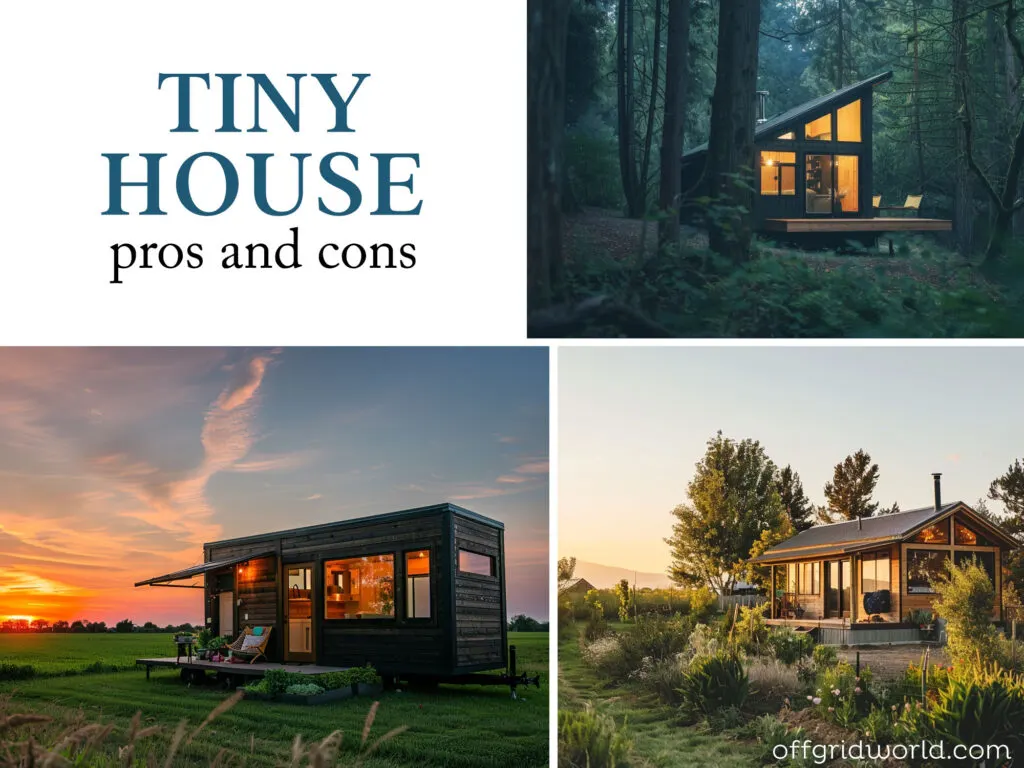As housing costs continue to soar, the tiny house movement has gained popularity by offering a lifestyle free of the financial burdens and clutter typically associated with traditional homes. Ranging from roughly 300 to 500 square feet, tiny homes attract minimalists and travel enthusiasts who appreciate the benefits of compact living and a more simple lifestyle.
However, despite the romanticization of tiny home living and its financial perks, there are also legal obstacles, limited storage, and potential resale issues to consider. This guide will walk you through the most important factors when evaluating the pros and cons of the tiny house lifestyle.
Key Takeaways
- Affordability and reduced cost of living are major benefits of tiny homes
- Modern amenities and innovative design solutions can be found in many tiny homes
- Eco-friendly and sustainable living is often associated with the tiny house movement
- Zoning laws, space limitations, and financing challenges can present drawbacks to tiny house living
- Travel and maintenance benefits make tiny homes attractive to those seeking mobility and simplicity
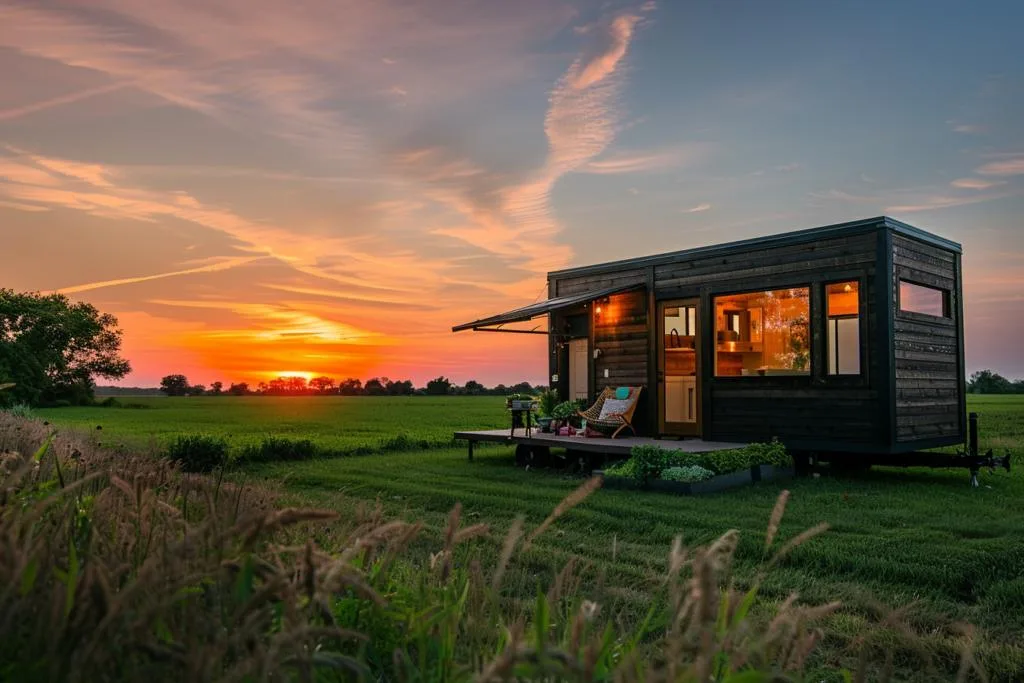
The Rise of the Tiny House Movement
The tiny house movement has experienced a considerable surge in popularity in recent years. This trend reflects a shift in societal values, placing greater emphasis on minimalistic living, affordable housing options, and sustainability in housing. The movement encourages individuals to re-evaluate their living situations and reconsider the conventional approach to homeownership.
One of the primary attractions to downsizing is the potential for significant cost savings. By downsizing to a smaller, more compact living space, individuals and families can reduce their housing expenses while still enjoying the comforts of a modern home.
Many are drawn to the opportunity of a simpler, more focused lifestyle that centers on experiences and relationships rather than material possessions, and living small is a great way to achieve this. Tiny homes are also some of the most popular types of off grid homes.
The tiny house movement encompasses:
- A downsizing trend: The increase in interest in smaller living spaces can be attributed in part to the desire for a less cluttered and more organized living environment. By choosing to go small, residents must prioritize what is truly important and let go of unnecessary possessions.
- Minimalistic living: The tiny house movement encourages a minimalistic lifestyle, allowing people to focus on the essentials and fostering a sense of clarity, purpose, and contentment.
- Affordable housing options: With the cost of traditional housing skyrocketing, many have turned to tiny homes as a viable, budget-friendly alternative. The reduced expenses associated with tiny houses make homeownership more attainable for a wider range of people.
- Sustainability in housing: The smaller footprint of tiny homes translates to a decreased environmental impact, reducing energy consumption, carbon emissions, and overall resource use. This aspect particularly appeals to those who prioritize eco-conscious living and stewardship of the planet.
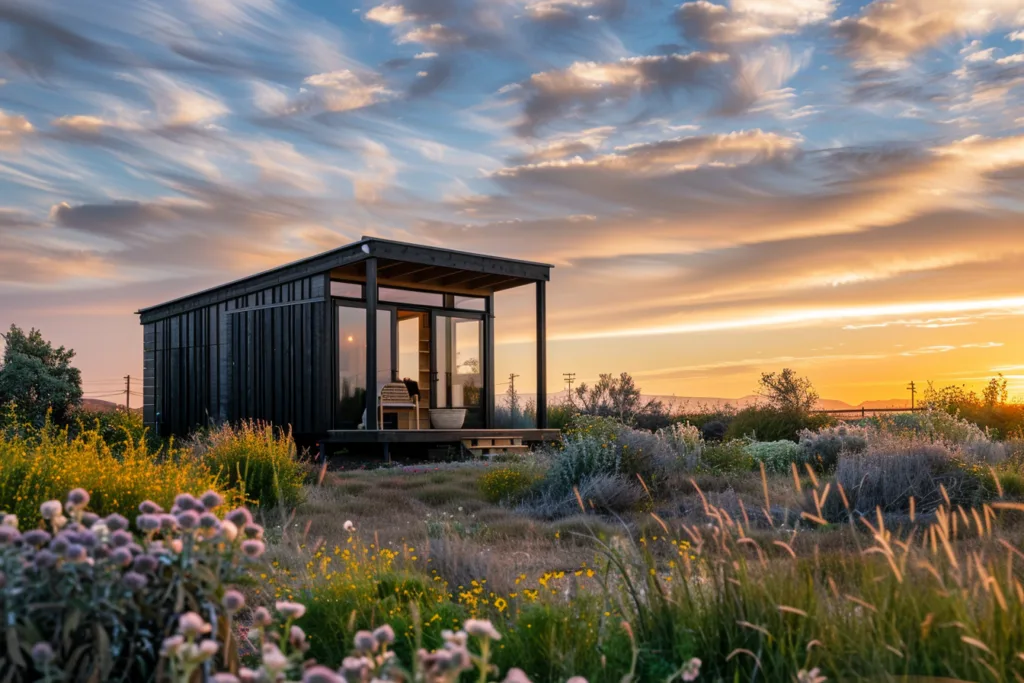
Benefits of Tiny Houses
There are many reasons why people choose to forgo the standard home option and downsize to a smaller house. Here are some of them:
1. Affordability and Lower Cost of Living
One of the biggest advantages of a small home is the affordability it offers. Building a tiny home can range from $10,000 to $180,000, with the average cost falling between $30,000 to $75,000. This is considerably less than larger homes, providing an opportunity to substantially lower living expenses and foster home savings.
Eliminating mortgage payments by building a home out-of-pocket can lead to healthier savings accounts and less money stress. Moreover, downsizing cuts utility bills and can even eliminate them for those with off-grid capabilities. This results in a more robust bank account over time and highlights the financial benefits of downsizing.
2. Modern Amenities in a Compact Space
Despite their small footprint, tiny homes can still offer many modern and luxurious amenities. Thanks to compact space innovation and creative design, tiny homes can have air conditioning, washer/dryer units, full stovetops, and even small bathtubs. These luxury features ensure that homeowners can enjoy the comforts of a traditional home in a smaller space.
Innovation in furniture and interior design allows for multifunctional and space-efficient solutions. Custom storage and foldable furniture, such as tables and beds, create a comfortable and organized living environment, proving that downsizing doesn’t mean sacrificing modern conveniences.
3. Eco-Friendly Impact and Sustainability
Tiny homes are known for their eco-friendly design and emphasis on sustainability. A smaller home means a reduced carbon footprint and lower consumption rates. Occupants of tiny houses are shown to consume over 54% less energy than the average American. With smaller utility bills for electricity and gas, tiny homeowners have the opportunity to make a positive impact on the environment while saving money.
Sustainability in tiny houses can also extend beyond energy consumption. Tiny homes have the potential to incorporate natural power sources, such as solar panels, as well as rain capture systems. These eco-friendly features contribute to reducing the carbon footprint of the occupants and help promote a greener and more sustainable way of living.
4. The Freedom to Explore with a Portable Home
One of the most appealing aspects of some tiny homes is their mobility. With a tiny house on wheels, homeowners can easily explore different locations without the need for traditional accommodations.
This mobility allows homeowners to change their scenery from beaches to mountains, taking their home with them and fostering a sense of wanderlust.
Exploring with a tiny home makes it possible to experience new places without giving up the comfort of your own home. This convenience is especially attractive to those who value adventure and flexibility while enjoying the minimalistic lifestyle benefits of living small.
5. Less Space, Less Cleaning
Simple living in a tiny house means reduced space, which has its perks. The ease of maintenance is one such advantage, as less space results in less cleaning. Downsizing possessions to the essentials minimizes clutter, and the reduced square footage allows owners to clean their entire home quickly.
The simplicity of the space encourages a decluttered, efficient lifestyle. This minimalistic approach promotes organization and prioritization in daily life, ultimately resulting in less stress and more time to focus on activities that truly matter.
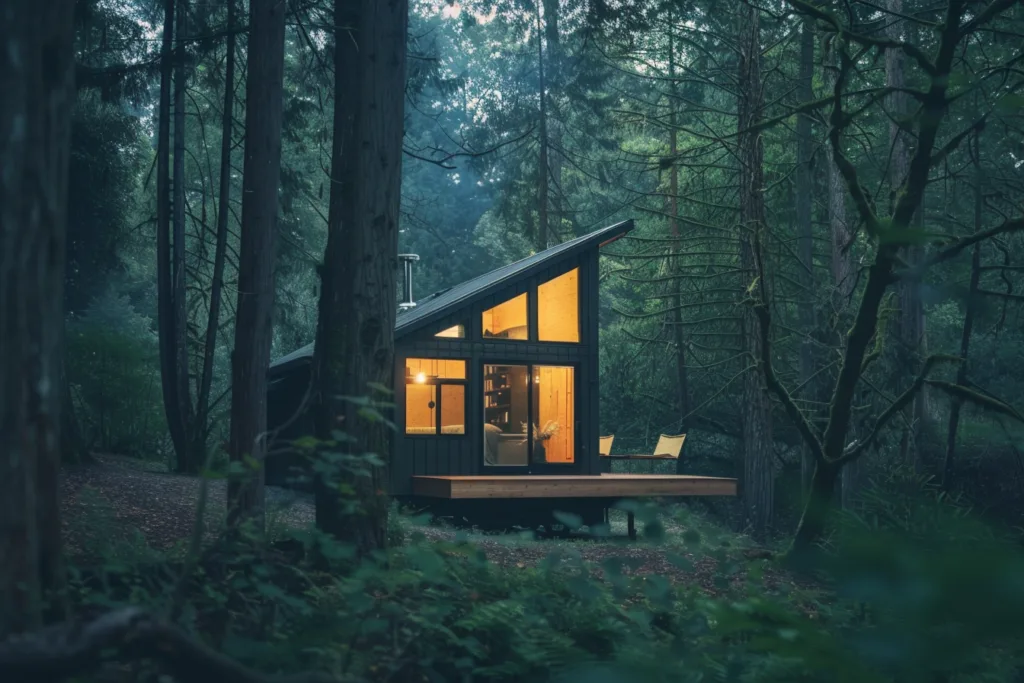
Drawbacks of Living in a Small House
While tiny homes have attracted many with their affordability and minimalistic charm, it’s essential to consider that there are some drawbacks to the tiny house lifestyle. Challenges of small space living can significantly impact daily life, and understanding the disadvantages of downsizing will enable you to make an informed decision.
1. Limited Storage Space
The small size of tiny homes naturally results in limited storage space. This could force occupants to downsize their belongings substantially and frequently organize their possessions to maximize available space.
Some of the size constraints may manifest in various ways, including:
- Major downsizing of possessions
- Frequent trips to the store, owing to limited refrigerator and pantry space
- Restricted areas for entertaining guests
In order to efficiently reside within a tiny home, individuals must adopt an organized and purposeful lifestyle, making thoughtful decisions about the items they keep and prioritizing vertical storage solutions wherever possible.
2. Everyday Living Challenges
The appliances and facilities in a small space are limited, so cooking and sanitation tasks can be more challenging than in a traditional home. Smaller refrigerators, for instance, may require more frequent grocery shopping, while limited counter space can make meal preparation trickier.
While tiny homes can be a great option for individuals or couples, families may find the lack of personal space and privacy to be a challenge.
3. Legal Challenges of Tiny House Living
Tiny house owners also face a number of legal challenges that can greatly impact their overall experience, such as:
- Zoning restrictions that may dictate where tiny houses can legally be parked or constructed
- Varied building classification requirements that can differ between jurisdictions
- Assessing and securing land suitable for dwelling, potentially leading to unforeseen expenses
- Accounting for the cost of mobile assets and maintaining compliance with local building codes and regulations
Given the prevalence of these downsizing obstacles, it’s important for potential tiny homeowners to thoroughly research their local laws and regulations before embarking on their downsizing journey. Becoming well-informed about legal requirements will help to minimize frustrating roadblocks and simplify the tiny living experience that many strive for.
4. Home Value Depreciation
Like most real estate, traditional homes typically appreciate in value over time. Tiny houses, on the other hand, are often treated similar to mobile homes or recreational vehicles, which depreciate. This may affect your home investment in the long run.
While the land value should hold steady or rise, the home itself might not enjoy the same value benefits of a permanent home.
5. Difficulty Obtaining Traditional Financing
Due to the unconventional nature of tiny homes, it can be challenging to secure traditional financing such as mortgages. This is one of the biggest cons of tiny houses that people face, as it could hinder the ability to purchase a tiny home without access to savings or other financing alternatives like a personal loan or borrowing from family members.
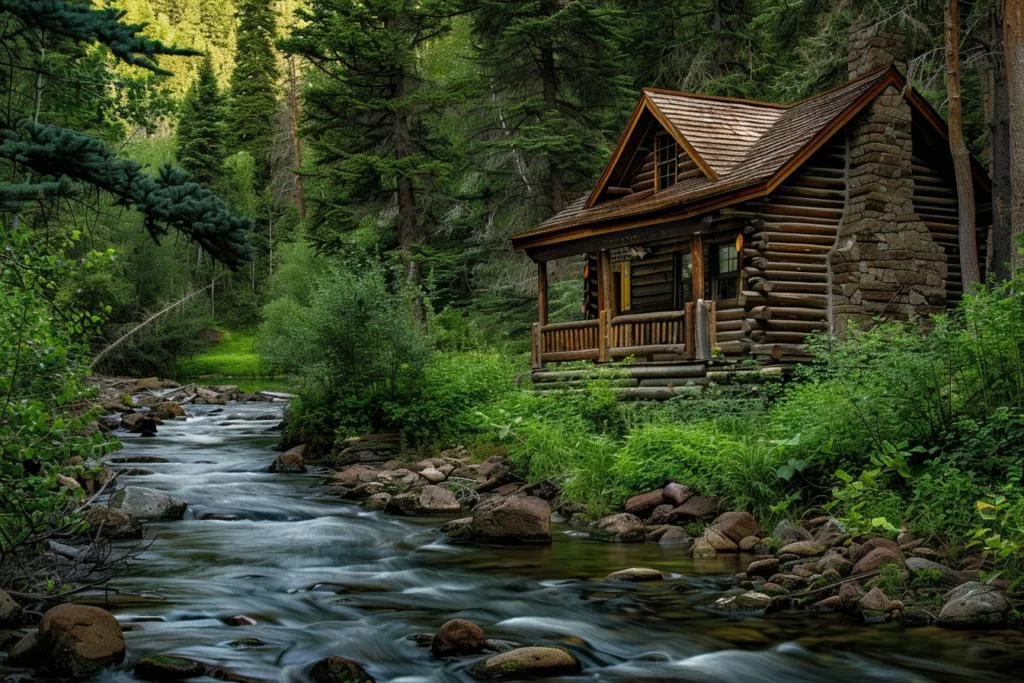
Is Tiny House Living Right for You?
Weighing the advantages and disadvantages of tiny house living, the choice to pursue a life in a compact space involves serious consideration. While the economic benefits, environmental sustainability, and freedom of travel may initially attract prospective homeowners, one must also be aware of the challenges that come with the lifestyle.
Space constraints, legal hurdles, and substantial downsizing are some of the obstacles that future tiny home occupants may face. It is essential to assess these factors before making the decision, as it is not a one-size-fits-all solution for everyone’s housing needs.
Overall, the tiny house movement offers a unique and potentially fulfilling alternative for those seeking a simplified lifestyle. However, it is vital to carefully weigh the pros and cons before embracing compact living choices and making the investment. By thoroughly considering the practical daily realities and long-term implications, individuals and families can make informed decisions that align with their values, preferences, and unique circumstances.
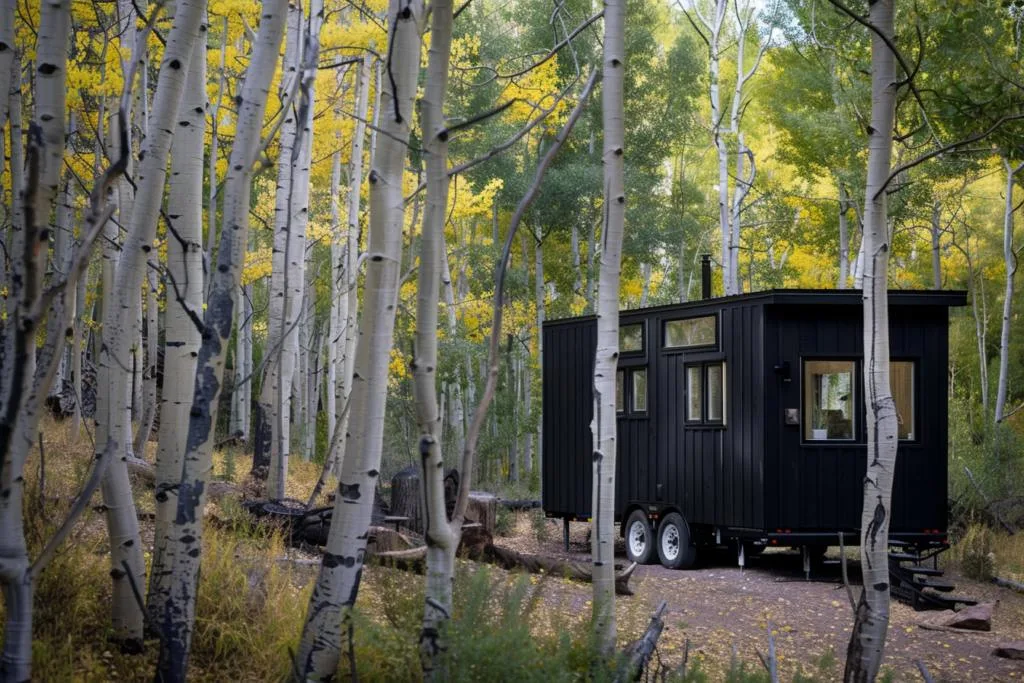
FAQ
What is the average cost of building a tiny home?
Building a tiny home ranges from $10,000 to $180,000 but averages between $30,000 to $75,000, which is considerably less than the cost of traditional homes.
What modern amenities can be included in a tiny home?
Despite their small footprint, tiny homes can include a wide array of modern and luxurious amenities such as air conditioning, washer/dryer units, full stovetops, and even small bathtubs. Most have a composting toilet in the bathroom and many are set up to utilize greywater.
How do tiny homes impact the environment?
Tiny homes have a reduced carbon footprint and lower consumption rates. They use significantly less energy, leading to smaller utility bills for electricity and gas. Occupants of tiny houses are shown to consume over 54% less energy than the average American and use fewer resources overall.
What are some drawbacks of living in a tiny house?
Living in a tiny home can come with multiple challenges, including stringent zoning laws making it difficult to find a legal residence space, potential depreciation of home value, difficulty obtaining traditional financing, limited storage space, and size constraints on appliances and facilities.
What are the benefits of having a portable tiny home?
One of the standout features of a tiny home is the ability to mount it on wheels and explore different locations without the need for traditional accommodations. This mobility offers homeowners the freedom to change their scenery, taking their home with them and fostering wanderlust.
How does a tiny home simplify cleaning and maintenance?
The small living space significantly reduces the time and effort needed for cleaning and maintenance. Downsizing possessions to the essentials minimizes clutter, and the reduced square footage allows owners to clean their entire home in a fraction of the time.
What are some space and legal challenges faced by tiny home dwellers?
Space limitations in tiny homes require significant downsizing and may contribute to a lack of storage or hosting space. Additionally, legalities such as zoning restrictions and classification difficulties can create challenges when trying to park or build tiny homes. Securing land and accounting for properties that move often can escalate costs and complicate the simple life that tiny homes are meant to represent.
